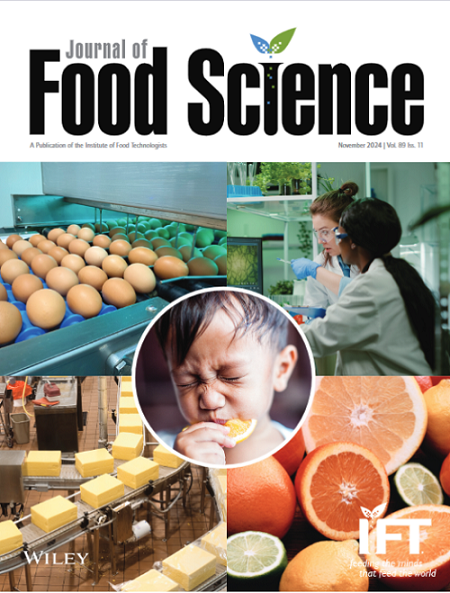Aromatic and sensorial profiles of Guichang kiwi wine fermented by indigenous Saccharomyces cerevisiae strains
Abstract
The indigenous Saccharomyces cerevisiae (S. cerevisiae) serves as an essential tool for enhancing the sensory and aromatic profiles of fruit wines from specific regions. This study aims to investigate the effects of inoculating indigenous S. cerevisiae strains Sc1, Sc2, and a commercial strain Sy on the physicochemical properties, organic acids, sensory properties, and volatile compounds of Guichang kiwi wines (Sc1 wine, Sc2 wine, Sy wine) compared to unfermented kiwi juice. Compared to Sy wine, the ethanol concentration in Sc1 and Sc2 wines significantly increased, while the total organic acids content decreased, and the sensory properties of alcohol, fruity, and typicality were notably enhanced. Sc1 wine demonstrated the least reduction in vitamin C (VC) concentration and the lowest total organic acids concentration. Additionally, Sc1 wine surpassed Sc2 wine in terms of scores for alcohol, mouth-feel, acidity, floral, fruity, and typicality. A total of 47 volatile compounds were identified in both the juice and wines using the two-dimensional gas chromatography–mass spectrometry (GC × GC–MS) technique. A strong correlation was observed between 16 odor-active compounds and six sensory attributes, while nine aroma-active compounds (VIP > 1) were identified as the crucial differential compounds responsible for the aromatic characteristics of the juice and wines. Fermentation with Sc1 led to increased production of alcohols, ethyl esters, phenylethyl alcohol, and isoamyl acetate, which significantly enhanced floral and fruity flavors. This study provides evidence that fermentation with the indigenous S. cerevisiae strain Sc1 contributes to improving sensory attributes and enhancing aroma quality in Guichang kiwi wine.
Practical Application
As kiwi wine continues to gain widespread popularity among consumers, there is an increasing preference for the use of indigenous yeast strains in the fermentation process. This study demonstrates that, compared to the indigenous S. cerevisiae strain Sc2 and the commercial strain Sy, the indigenous sourced S. cerevisiae strain Sc1 produced fermented wine with the lowest total organic acids content. Furthermore, it exhibits a greater diversity and concentration of volatile compounds, along with a more pronounced floral and fruity aroma. These findings suggest its potential to enhance both the sensory attributes and aroma quality of Guichang kiwi wine.

 求助内容:
求助内容: 应助结果提醒方式:
应助结果提醒方式:


